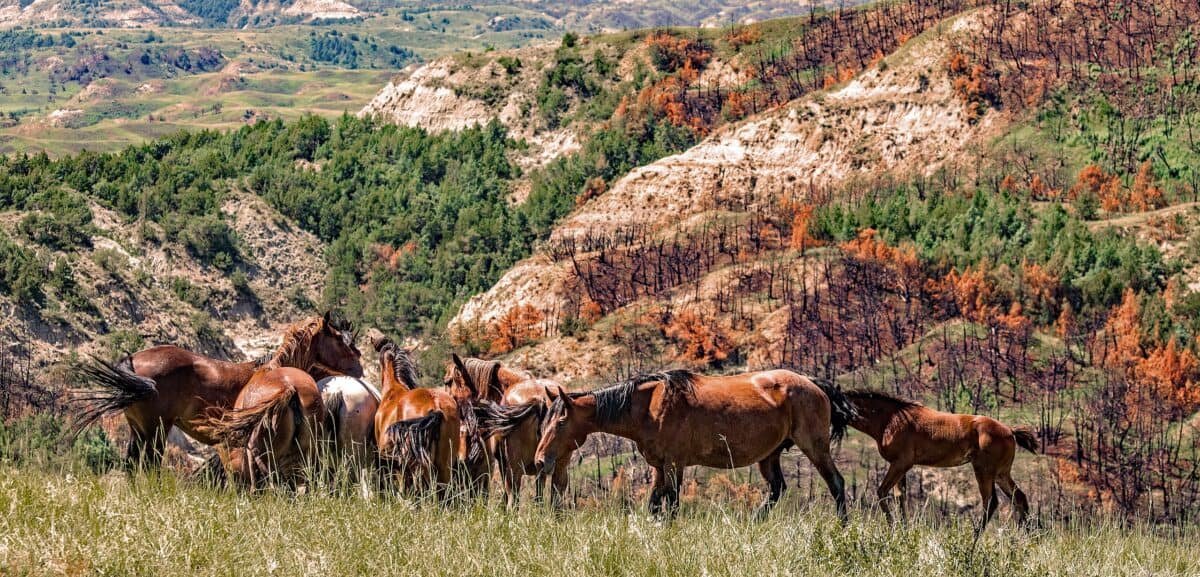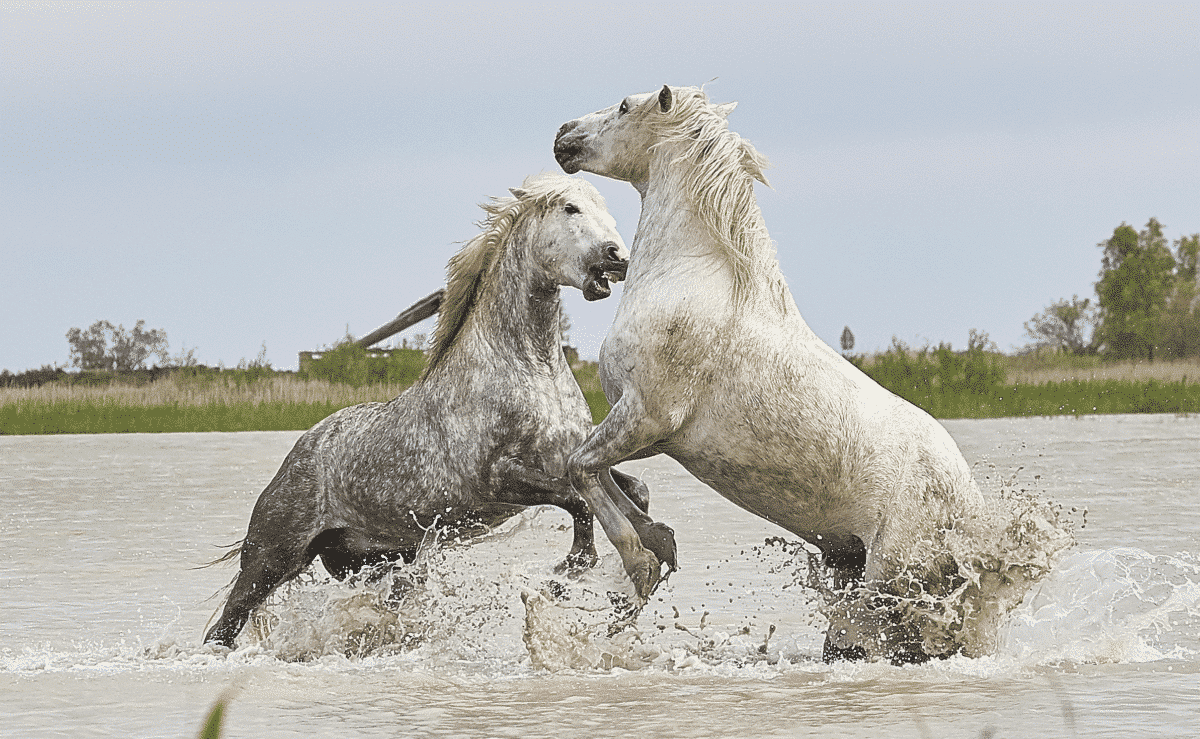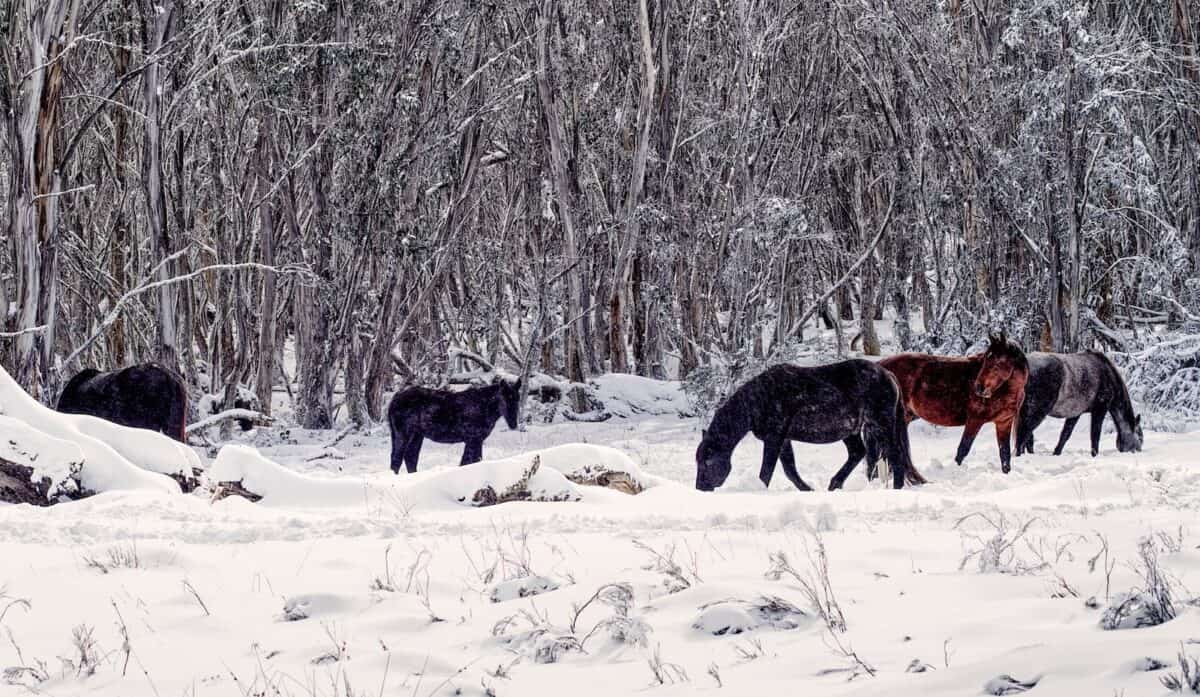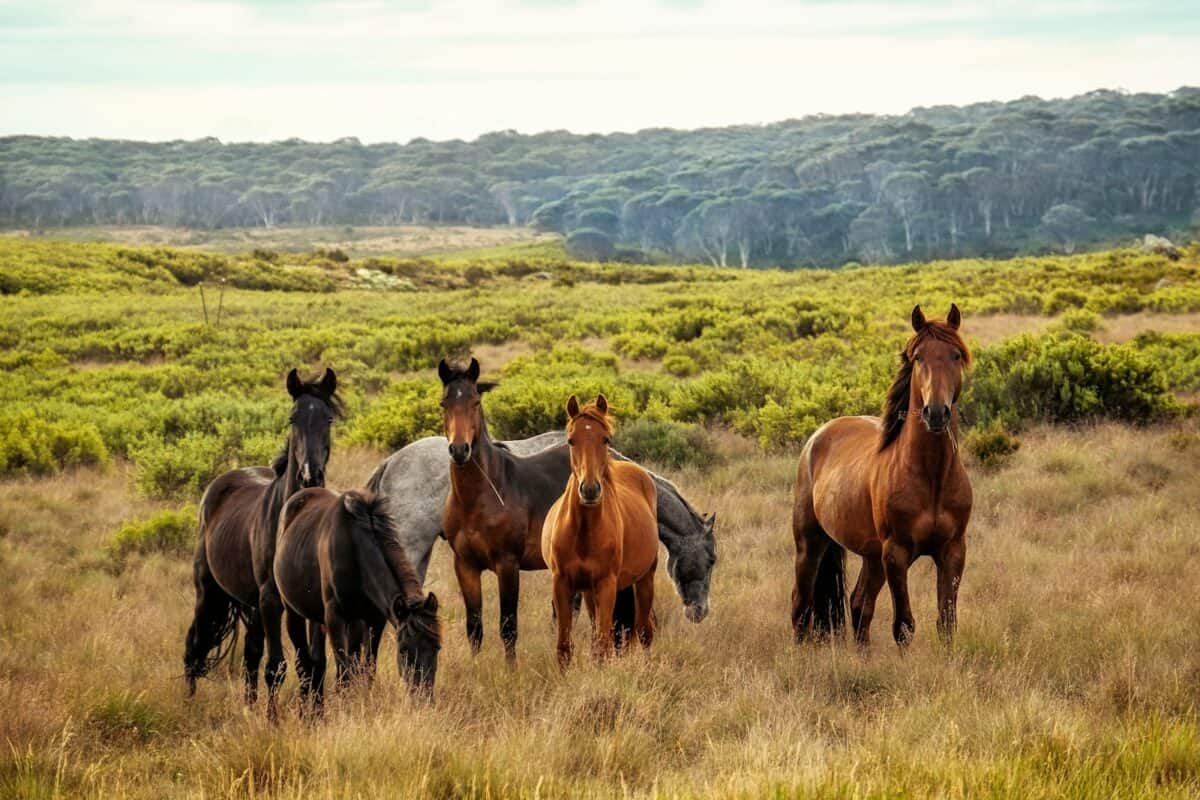In the vast plains and mountain ranges where wild horses roam, complex social structures govern their herds. Unlike many human societies with formal elections or appointed authorities, wild horses establish leadership through natural processes deeply rooted in evolutionary survival strategies. These magnificent creatures have developed sophisticated methods for selecting individuals who can best ensure the herd’s survival, reproduction, and general welfare. Understanding how wild horses choose their leaders offers fascinating insights into equine behavior, social dynamics, and the delicate balance between individual capabilities and collective needs.
The Basic Structure of Wild Horse Herds

Wild horse herds typically organize into two primary social structures: the family band (also called a harem) and bachelor bands. The family band consists of a lead stallion, several mares, and their offspring. Bachelor bands comprise young males who haven’t yet established their own harems. Within family bands, leadership isn’t solely the domain of the stallion, as many might assume. Instead, a complex leadership dynamic exists where experienced mares often make critical decisions while stallions provide protection. This dual leadership system creates a balanced approach where different individuals contribute based on their unique strengths and experience. Understanding this fundamental structure is essential before examining how leaders emerge within these groups.
The Role of Experience in Mare Leadership

Within a wild horse herd, older mares frequently emerge as decision-makers, particularly regarding migration, grazing locations, and water sources. These experienced females, often called “lead mares,” have accumulated years of knowledge about the landscape, seasonal changes, and potential dangers. Research conducted in various wild horse populations, including those in the American West and Mongolia’s Przewalski’s horses, confirms that herds typically follow older mares during daily movements. This leadership isn’t claimed through aggression but earned through demonstrated wisdom. The lead mare’s decisions directly impact the herd’s success in finding resources, and younger mares learn from observing these experienced leaders. This knowledge transfer ensures that crucial survival information passes through generations, creating resilience within the herd structure.
Stallion Leadership: Protection and Reproduction

While mares often guide the herd’s movements and resource decisions, stallions fulfill a different but equally critical leadership role focused on protection and reproductive success. A lead stallion defends his family band against predators and competing males who might attempt to take over his position. His leadership qualities include physical strength, stamina, strategic fighting skills, and vigilance. Unlike mare leadership, which develops gradually through experience, stallion leadership is frequently established through direct competition. A successful lead stallion must consistently demonstrate his capability to protect the herd and maintain his position against challengers. This aspect of leadership is more visibly competitive, with clear displays of dominance behaviors and occasional physical confrontations with rival males.
Leadership Selection Through Natural Testing

Wild horses don’t consciously “vote” for their leaders, but their collective behavior effectively tests potential leaders through natural challenges. A mare demonstrating poor judgment about water sources or grazing locations might find fewer herd members following her decisions over time. Similarly, a stallion unable to effectively protect the herd may lose mares to more capable males. This natural testing process ensures that leadership qualities align with survival needs. During drought conditions, for instance, a mare who remembers distant water sources becomes invaluable, elevating her influence. During predator threats, a particularly brave and strategic stallion proves his worth. These real-world tests create a meritocratic system where leadership corresponds directly to demonstrated capabilities rather than arbitrary factors.
The Genetic Component of Leadership

Leadership qualities in wild horses appear to have both learned and inherited components. Studies of multiple generations of wild horses suggest that certain temperamental traits beneficial for leadership—such as confidence, curiosity, and appropriate reactivity—have genetic foundations. Offspring of lead mares often display similar decisive behaviors early in life, suggesting inherited tendencies. However, these genetic predispositions must be developed through experience and learning. Researchers studying feral horse populations in places like Assateague Island and the Pryor Mountains have observed that young horses with leadership potential still undergo years of social learning before fully developing their capabilities. This blend of nature and nurture ensures that leadership abilities are both inheritable and adaptable to changing environmental conditions.
Communication Methods Among Horse Leaders

Wild horse leaders employ sophisticated communication methods to guide and protect their herds. Lead mares use subtle body language—ear positions, head gestures, and specific movement patterns—to indicate directional changes or potential dangers. These communications might appear nearly imperceptible to human observers but carry clear meaning within the herd. Stallions communicate through more demonstrative displays, including vocalizations, stamping, and posturing, particularly when warning of threats or asserting dominance. Research using slow-motion video analysis has revealed that these communications often cascade through the herd, with members closest to the leader responding first and creating a wave of synchronized movement. This efficient communication system allows herds of dozens of individuals to move with remarkable coordination, essential for avoiding predators and accessing resources.
How Leadership Transitions Occur

Leadership transitions in wild horse herds happen through different mechanisms depending on whether they involve mares or stallions. Among mares, leadership typically transfers gradually as an aging lead mare slows down and a younger experienced female begins making more decisions that the herd follows. This transition often occurs without obvious conflict, sometimes appearing almost imperceptible to outside observers. For stallions, leadership changes are frequently more dramatic, involving direct challenges and physical confrontations. When a lead stallion ages, weakens from injury, or faces a particularly strong challenger, he may lose his position following defeat in a confrontation. These transitions represent critical periods for the herd, as new leadership can significantly alter movement patterns, protection strategies, and social dynamics within the group.
Seasonal Influences on Herd Leadership

The changing seasons significantly impact leadership dynamics within wild horse herds. During harsh winter months, when food resources become scarce, experienced mares’ knowledge of sheltered areas and reliable food sources becomes particularly valuable, often strengthening their leadership influence. In spring, during foaling season, leadership qualities related to finding safe birthing locations and protecting vulnerable foals gain importance. During summer drought periods, leaders who can locate water sources even in extreme conditions become essential for survival. Research tracking wild horse movements across seasons has shown that different individuals may gain or lose influence depending on the specific challenges faced by the herd. This seasonal fluidity in leadership ensures that the most appropriate skills rise to prominence when needed most, creating a highly adaptive social system.
The Balance Between Competition and Cooperation

Wild horse leadership emerges from a fascinating balance between competitive and cooperative behaviors. While clear competition exists, particularly among stallions vying for breeding rights and herd control, successful horse societies also demonstrate remarkable cooperation. Lead mares may work together to coordinate movements, with different individuals taking primary leadership roles depending on specific situations or terrain. Stallions from neighboring family bands occasionally collaborate to drive off predators threatening multiple herds. Studies of wild horse populations in environments like Romania’s Danube Delta show that this balance between competition and cooperation creates resilient social structures capable of adapting to changing conditions. When resources are abundant, cooperation tends to dominate; when resources become scarce, competitive elements may increase. This dynamic tension creates a constantly evolving leadership landscape.
How Human Intervention Affects Leadership Structures

Human management practices significantly impact natural leadership dynamics in wild horse populations. When herd members are selectively removed for population control, essential knowledge held by older mares can be lost, disrupting traditional movement patterns and resource utilization. Similarly, removing lead stallions can create instability as multiple males compete to fill the vacant position. Research following managed wild horse herds has documented that after removals, herds often experience periods of social reorganization lasting months or even years. In contrast, herds in truly unmanaged settings, such as those in remote regions of Mongolia or parts of the western United States, maintain more stable leadership structures with gradual transitions. This contrast highlights how natural selection processes that have shaped equine leadership for millennia can be disrupted by well-intentioned but potentially disruptive human interventions.
Comparing Wild Horse Leadership to Other Equids

Leadership patterns in wild horses (Equus caballus) show both similarities and differences when compared to their close relatives. Zebras (Equus quagga and related species) form similar family bands with lead mares and protective stallions, but their leadership tends to be more strongly influenced by predator pressure, with heightened vigilance behaviors. Wild asses and onagers (Equus hemionus and relatives) often form more loosely structured groups with less stable leadership, reflecting their adaptation to extremely harsh desert environments where resources are unpredictable. Przewalski’s horses (Equus ferus przewalskii), the only true wild horses that were never domesticated, show particularly strong lead mare influence, possibly reflecting their adaptation to the challenging Mongolian steppe environment. These comparisons reveal how leadership structures evolve to match specific environmental challenges while maintaining core principles across the equid family.
The Future of Wild Horse Leadership Research

Contemporary research on wild horse leadership is being transformed by new technologies and methodologies. GPS tracking collars now allow researchers to document movements of entire herds with unprecedented precision, revealing subtle leadership patterns previously impossible to detect. Genetic analysis helps identify relationships between leadership tendencies and specific genetic markers, opening new avenues for understanding hereditary components of leadership. Drone footage provides overhead perspectives of herd movements, showing coordination patterns invisible from ground level. These advances are revealing that horse leadership systems are even more complex and nuanced than previously understood. As climate change alters habitats and resources, ongoing research will be crucial for understanding how wild horse leadership adapts to these new challenges. This research not only illuminates fascinating aspects of equine behavior but also provides insights into the evolution of social structures across species.
The leadership selection process in wild horses represents one of nature’s most sophisticated examples of natural meritocracy, where individuals earn their positions through demonstrated capabilities directly relevant to group survival. This system, refined over millions of years of evolution, creates resilient social structures capable of adapting to environmental challenges while maintaining group cohesion. By balancing the complementary leadership roles of experienced mares and protective stallions, wild horse herds benefit from both accumulated knowledge and physical protection. As humans continue to manage and sometimes intrude upon wild horse populations, understanding these natural leadership dynamics becomes increasingly important for conservation efforts that respect and preserve these ancient social structures. The wisdom embedded in how wild horses choose their leaders offers valuable lessons about leadership based on genuine capability rather than mere assertion—a principle with relevance far beyond the windswept plains where these magnificent animals roam free.
- The Coldest Town in America—And How People Survive There - August 9, 2025
- How Some Birds “Steal” Parenting Duties From Others - August 9, 2025
- 12 Deep-Sea Creatures You Won’t Believe Exist - August 9, 2025

